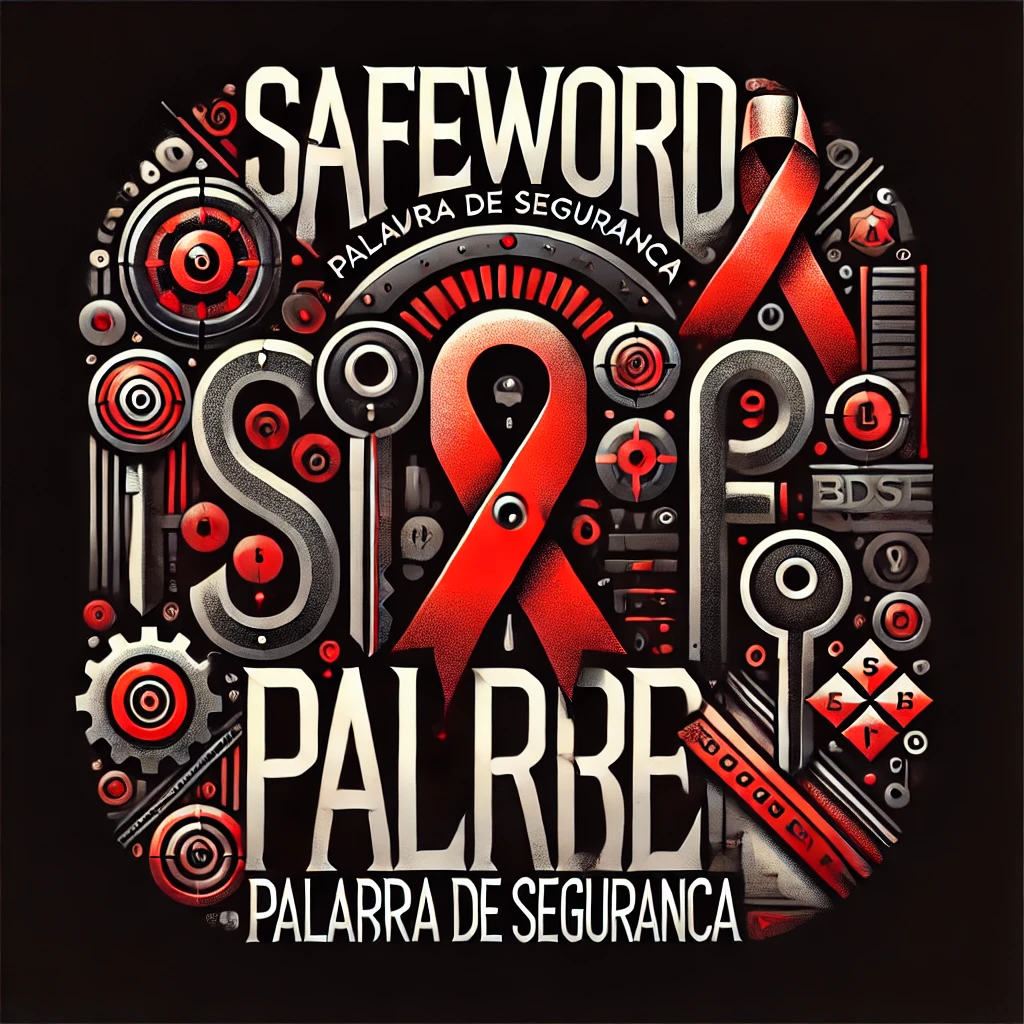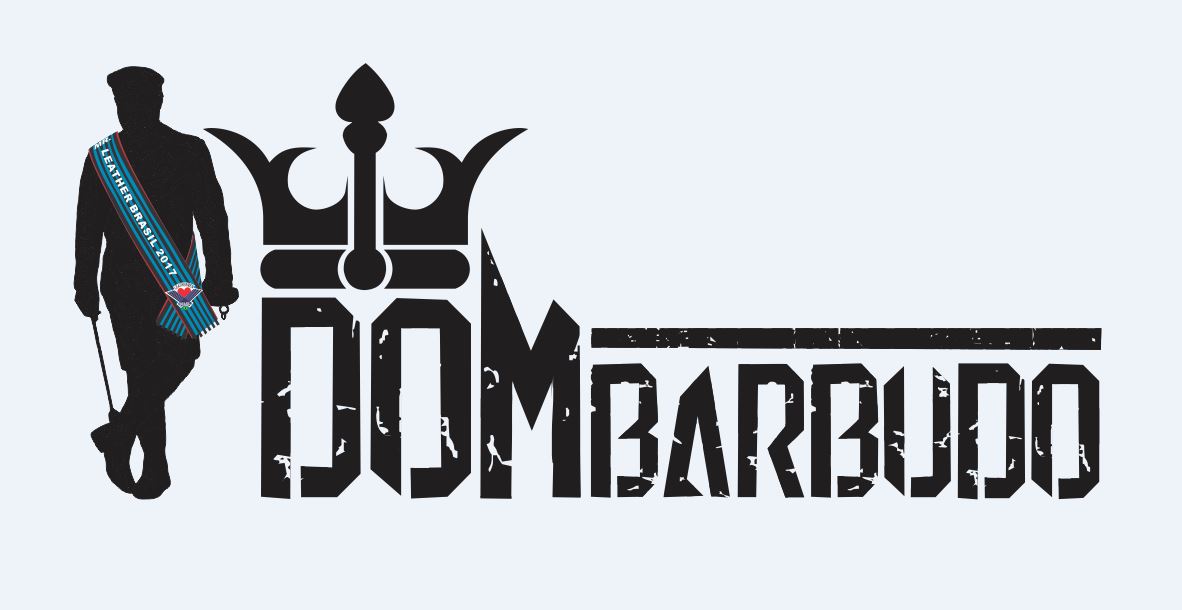📖 SAFEWORD
Categoria: Conceito
🔎 SIGNIFICADO
A Palavra de Segurança, também conhecida mundialmente como “Safeword”, desempenha um papel vital no BDSM, atuando como uma garantia de que os limites pré-estabelecidos sejam respeitados. Durante uma cena BDSM, especialmente aquelas que envolvem dor, humilhação intensa ou práticas extremas, a excitação e adrenalina podem interferir na clareza da comunicação comum. Por isso, a safeword surge como um recurso claro, inequívoco e inquestionável de alerta, com o propósito direto de interromper ou pausar a ação imediatamente, evitando traumas físicos ou psicológicos irreparáveis. Uma safeword não pode ser um termo comum como “não” ou “pare”, pois estes podem fazer parte do cenário e serem confundidos com estímulos da própria cena. Por isso, escolhem-se palavras neutras e específicas, tais como “vermelho” (stop total), “amarelo” (reduzir intensidade ou atenção), e até “verde” (está tudo bem, prossiga), compondo um sistema simples e eficaz conhecido como “Sistema Semáforo”.
Exemplos práticos incluem:
- Utilização da palavra “vermelho” quando o submisso sente dor acima do desejado.
- Uso do termo “amarelo” quando deseja reduzir o ritmo ou intensidade, sem interromper completamente.
- “Verde” (tudo está bem, continue), formando um sistema simples e eficaz conhecido como “Sistema de Semáforo”.
- Um gesto alternativo (quando a comunicação verbal é impossível), como bater três vezes com as mãos ou piscar rapidamente.
🤝 NEGOCIAÇÃO
Antes de iniciar qualquer prática BDSM, a definição clara de uma safeword é indispensável, devendo ser negociada e aceita por todos os envolvidos. A eficácia da safeword depende diretamente da compreensão clara de seu significado e da garantia absoluta de seu cumprimento. Todos devem se sentir completamente seguros e confortáveis em usar essa palavra, sem receio ou hesitação.
💊 CUIDADOS ANTES E DEPOIS
Antes da cena, esclareça o uso da safeword com clareza absoluta. Certifique-se de que o submisso está ciente de que a palavra pode ser utilizada a qualquer momento sem julgamento ou crítica. Após o uso da safeword, o Dominador deve interromper imediatamente as ações e iniciar o aftercare, dando conforto emocional e atenção adequada ao submisso.
📌 EXISTE DIFERENÇA ENTRE OS TERMOS “PALAVRA DE SEGURANÇA” E “SAFEWORD”?
Sim, há uma diferença cultural e simbólica entre os dois termos — embora ambos tenham a mesma função prática.
“Palavra de Segurança” é o termo mais brando, traduzido para o português, comumente usado por iniciantes, por educadores que traduzem o BDSM para o público nacional, e por quem ainda está se familiarizando com a cena. Ele suaviza o impacto da terminologia original e torna o conceito mais acessível.
Já “Safeword” é o termo original, em inglês, amplamente reconhecido pela comunidade BDSM internacional. Ele carrega mais peso simbólico, autoridade e identificação entre praticantes experientes.
Usar “safeword” transmite automaticamente mais alinhamento com a cultura global do BDSM, enquanto “palavra de segurança” ainda carrega uma aura de adaptação ou introdução.
Na prática, ambas têm a mesma função: interromper imediatamente uma cena para proteger quem está envolvido. Mas quem já está mais inserido no universo kink tende a usar “safeword” com naturalidade — tanto em falas quanto em textos, eventos e negociações. É mais direto, universal e reconhecível fora do eixo lusófono.

🔎 MEANING
The Safeword, also known in Portuguese as “Palavra de Segurança”, plays a vital role in BDSM. It acts as a guarantee that pre-established limits will be respected. During a BDSM scene — especially those involving pain, intense humiliation, or extreme practices — arousal and adrenaline can cloud regular communication. That’s why the safeword exists: as a clear, unambiguous, and unquestionable alert, with the sole purpose of instantly stopping or pausing the action to prevent physical or psychological damage.
A safeword should never be a common word like “no” or “stop”, because those can easily be part of the roleplay and misinterpreted as part of the scene itself. That’s why neutral and specific terms are chosen, such as:
- “Red” (full stop),
- “Yellow” (slow down or check-in),
- and “Green” (everything’s fine, continue), forming a simple and effective system known as the “Traffic Light System.”
Practical examples include: • Using the word “red” when the submissive experiences pain beyond their limit.
• Saying “yellow” to reduce the intensity or pace without stopping the scene entirely.
• Using a non-verbal signal (when speaking is not possible), like tapping three times or blinking rapidly.
🤝 NEGOTIATION
Before any BDSM play, establishing a clear safeword is non-negotiable. It must be discussed, agreed upon, and understood by everyone involved. The effectiveness of a safeword depends entirely on a shared understanding of its meaning and the absolute guarantee that it will be respected without exception. Everyone must feel safe and confident to use the word — without shame or hesitation.
💊 BEFORE AND AFTER CARE
Before the scene, clearly explain how the safeword works. Make sure the submissive knows they can use it at any moment, without fear of being judged or criticized. After the safeword is used, the Dominant must stop the activity immediately and begin aftercare, offering emotional support and proper attention to the submissive’s state.
📌 IS THERE A DIFFERENCE BETWEEN “SAFEWORD” AND “PALAVRA DE SEGURANÇA”?
Yes, there’s a cultural and symbolic difference, even though both serve the same practical function.
“Palavra de Segurança” is the softer, Portuguese version, commonly used by beginners, educators translating BDSM concepts into Brazilian Portuguese, or by people still new to the scene. It softens the original term and makes the idea more accessible.
“Safeword”, on the other hand, is the original English term, widely recognized in the international BDSM community. It carries more symbolic weight, authority, and cultural alignment among experienced players.
Using “safeword” shows immediate connection to the global BDSM culture, while “palavra de segurança” still feels like an adapted concept for newcomers.
In practice, both serve the same purpose: to immediately interrupt a scene and protect those involved. But those more deeply immersed in the kink universe tend to use “safeword” naturally — in conversations, written communication, events, and negotiations. It’s more direct, universal, and clearly understood beyond the Portuguese-speaking world.
VEJA O TERMO: PALAVRA DE SEGURANÇA
TAKE A LOOK AT THE TERM: PALAVRA DE SEGURANÇA








